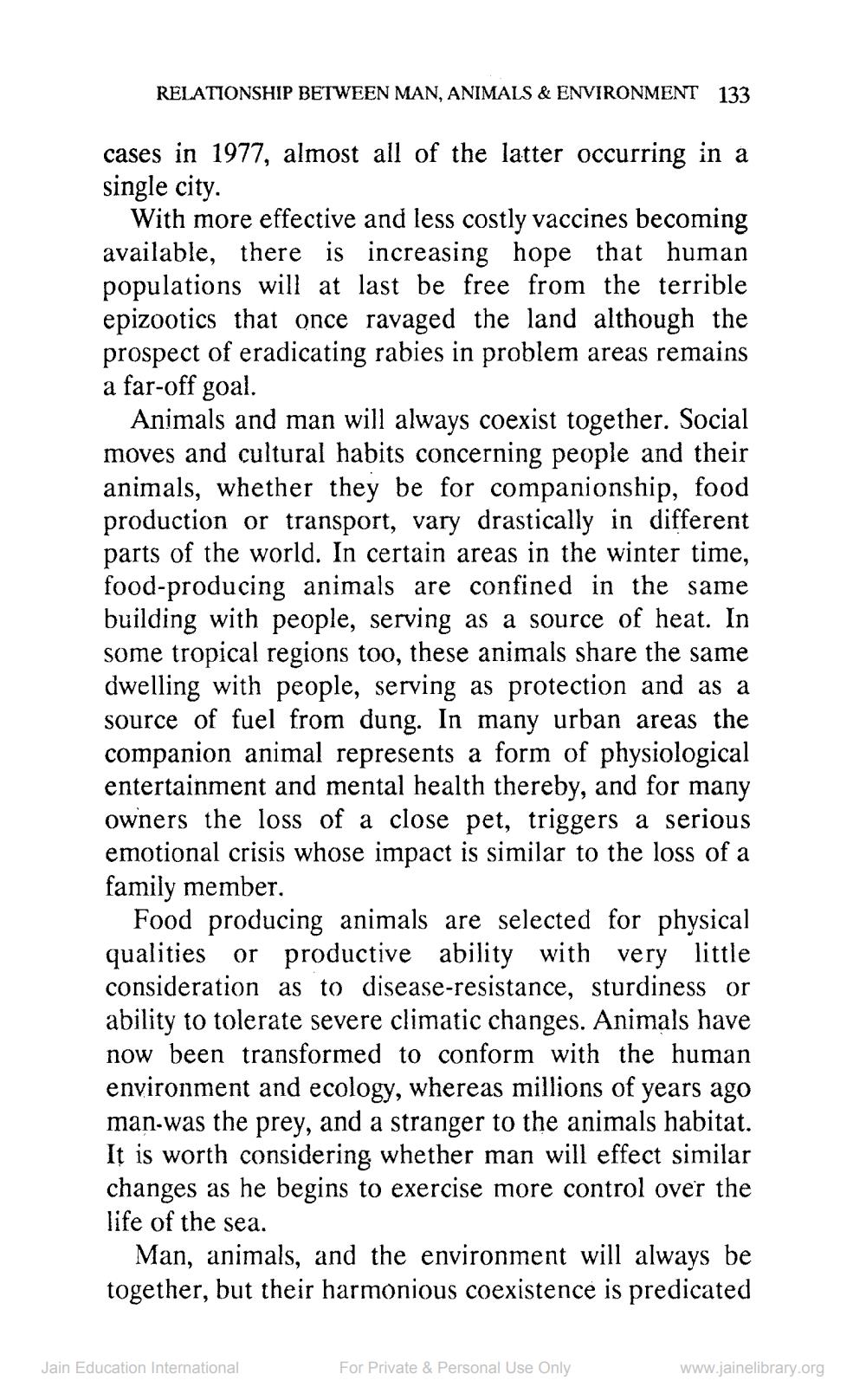________________
RELATIONSHIP BETWEEN MAN, ANIMALS & ENVIRONMENT 133
cases in 1977, almost all of the latter occurring in a single city.
With more effective and less costly vaccines becoming available, there is increasing hope that human populations will at last be free from the terrible epizootics that once ravaged the land although the prospect of eradicating rabies in problem areas remains a far-off goal.
Animals and man will always coexist together. Social moves and cultural habits concerning people and their animals, whether they be for companionship, food production or transport, vary drastically in different parts of the world. In certain areas in the winter time, food-producing animals are confined in the same building with people, serving as a source of heat. In some tropical regions too, these animals share the same dwelling with people, serving as protection and as a source of fuel from dung. In many urban areas the companion animal represents a form of physiological entertainment and mental health thereby, and for many owners the loss of a close pet, triggers a serious emotional crisis whose impact is similar to the loss of a family member.
Food producing animals are selected for physical qualities or productive ability with very little consideration as to disease-resistance, sturdiness or ability to tolerate severe climatic changes. Animals have now been transformed to conform with the human environment and ecology, whereas millions of years ago man-was the prey, and a stranger to the animals habitat. It is worth considering whether man will effect similar changes as he begins to exercise more control over the life of the sea.
Man, animals, and the environment will always be together, but their harmonious coexistence is predicated
Jain Education International
For Private & Personal Use Only
www.jainelibrary.org




